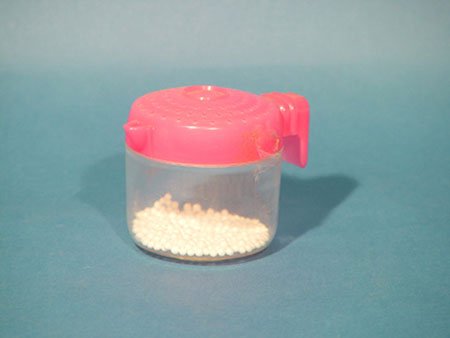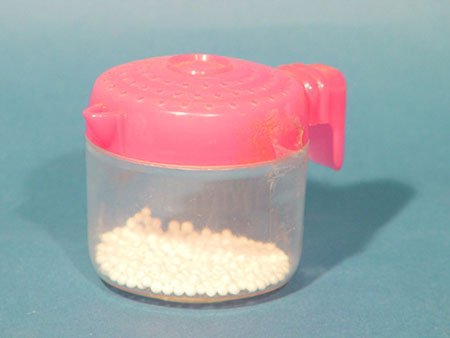Raw beads arrive in distinct granulation size ranges and can be expanded to corresponding larger size ranges by controlling the time and temperature the raw material is exposed to in order to achieve a desired expanded size range, see How foam expands.
The smallest raw material is bead made for cup molding, these beads are referred to in the industry as “T” beads. Raw “T” beads arrive in sizes .34 to .45mm. Since cup beads are for food contact and lost foam pattern applications, only a few of the chemical companies produce these beads in EPS, (“expandable polystyrene”). Specific small granulations are not available in copolymers such as GECET (which typically range in raw size from .4 to 1.0mm).
The next size category is for thin wall molding which is a specialty market. These beads are referred to as “C” granulation and range in raw sizes .45 to .6mm. Chemical companies are focusing on the larger markets for general applications and limiting availability of specialty small size beads. Usually “C” beads are a screening of smaller size beads from the volume production of “B” granulation material. Raw “B” beads range in size .6 to .9mm and are the main beads used for custom shape and block molding in the packaging and insulation markets.
“A” granulation is the largest raw bead available and ranges in size from 1.1 to 1.5mm. These beads are primarily used in insulation applications, molded into large blocks (approximately 1219mm x 1219mm x 3657 mm or 4” x 4” x 12”) which are then cut into the desired plank sizes.
As the bead is expanded, air pockets appear between the foam bead walls see photo in How Foam Expands, giving the bead good insulation and cushioning properties. This also means the density is decreased as there is less plastic filling the available space. Typically the beads are expanded by a factor of three or more times from the raw state. Densities ranging from 16 grams/liter up to 160 grams/liter are available offering expanded bead sizes ranging from 1 to 4 mm, as shown on the Mesh size conversion chart.
The beads become softer as they get larger since air replaces the plastic structure of the bead interior. The beads are limited in how large they can become. This is because of the relationship between blowing agent, plasticizer additives (which aids stretching of the polymer) and the molecular weight of the polymer chain inside the bead.
|
|
|

